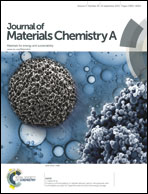An in-depth review on the role of carbon nanostructures in dye-sensitized solar cells
Abstract
Dye-sensitized solar cells (DSSCs) are considered to be promising, low-cost alternatives to amorphous silicon solar cells. The major components of a DSC include a metal oxide (usually TiO2), a dye, an electrolyte and a Pt- or carbon-deposited counter electrode. The photoexcited electrons from the dye diffuse through the TiO2 network and reach the counter electrode through an external circuit. However due to the trap-limited diffusion process, the electron collection efficiency is affected. Thus, for a hassle-free transport of electrons there is a need for additional electron transport channels. Further in order to reduce the overall cost of the device there is also a need for cheaper alternative counter electrodes in place of Pt. The 15th most abundant element in the earth's crust, carbon and its allotropes with their outstanding catalytic activity and electrical conductivity prove to be promising materials to overcome all these shortcomings and demerits. The review presented below summarizes the up-to-date research efforts on the role of carbon nanostructures in DSSCs, the various synthesis strategies adopted for their preparation and their photovoltaic performance. The review also includes a brief discussion about the role of carbon nanostructures in non-planar flexible wire-shaped DSSCs.


 Please wait while we load your content...
Please wait while we load your content...